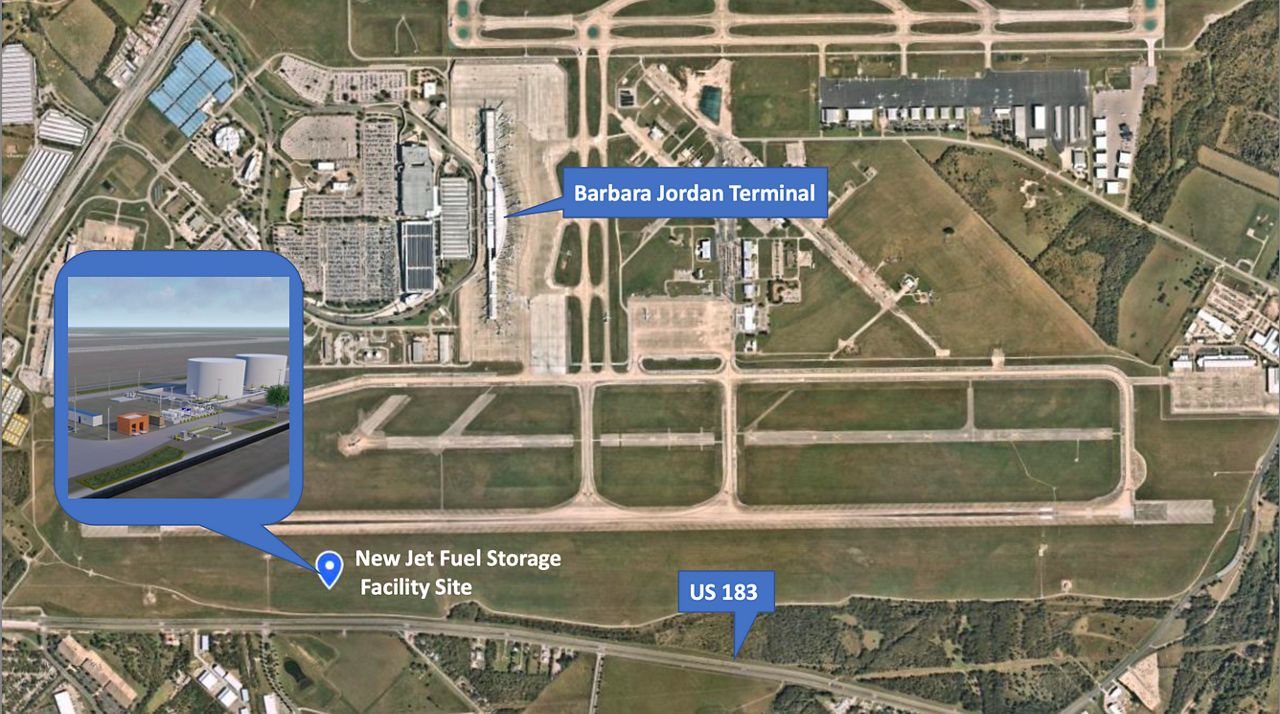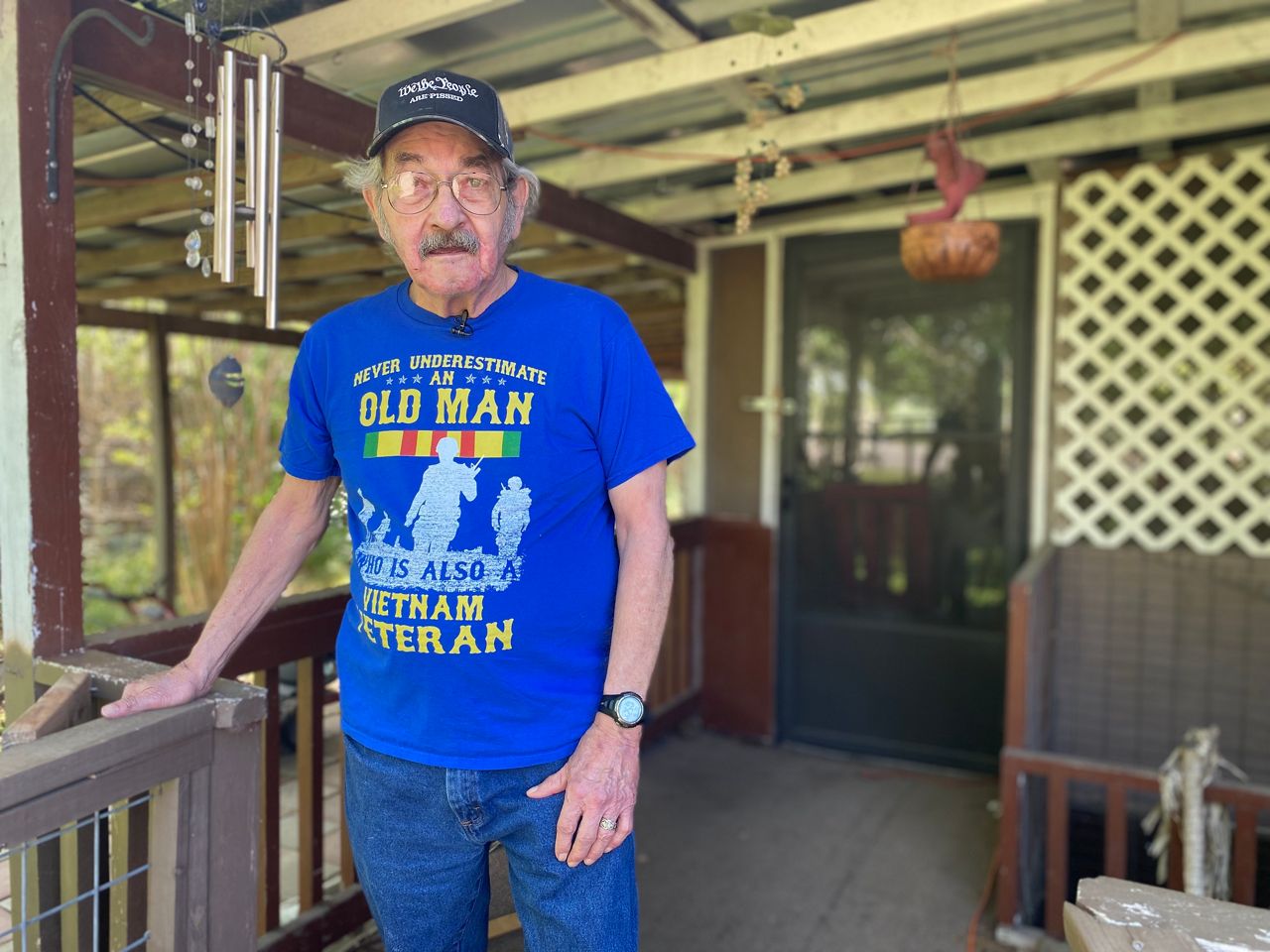AUSTIN, Texas — Construction is now underway for a new fuel tank storage facility at Austin-Bergstrom International Airport.
This is part of the airport’s expansion, which has faced major controversy from neighbors of the airport and environmental justice activists.
What You Need To Know
- Construction is now underway for a new jet fuel tank storage facility at the Austin airport
- The facility is off of Highway 183 in southeast Austin across from a residential neighborhood
- Neighbors and activists say the pollution from the tanks are harmful to people living nearby
- East Austin was once the site of a fuel tank farm that polluted communities of color for decades
Austin City Council voted against an environmental assessment following health concerns from the community. The location of the jet fuel tank farm is off of Highway 183 in southeast Austin, right across from several residential streets.

One of those streets is McCall Lane, where Richard Fletcher lives. He’s no stranger to living and working near planes and pollution. The Vietnam veteran was exposed to Agent Orange as a jet engine mechanic in the Air Force.
“With all that exposure to hazardous materials and toxic fumes, it’s a wonder I’m still alive,” Fletcher said.
Fletcher is worried about the pollution from fuel tanks that the airport is building just a few hundred feet from his home of nearly 50 years.

“The vapors don’t stop at the fence line,” he said.
The fuel storage facility is one of 61 projects included in the AUS 2040 Master Plan to address the airport's rising demand for air travel and “critically low fuel levels.”
In a press release, AUS wrote:
“AUS has an average daily supply of 2-3 days of fuel, below the industry standard of 5-7 days. If not built as planned, the airport will have to issue fuel shortage alerts. Airlines will have to carry extra fuel when flying to and from the City of Austin, and in some cases, AUS passengers could experience diversions and canceled or delayed flights.”
This isn’t the first time neighbors have fought fuel tanks in Austin. East Austin was once home to a roughly 50-acre fuel tank farm.
Carmen Llanes Pulido and her father Daniel Llanes live a block away from one of the last remaining fuel tanks to close down in the 1990s. Environmental studies found that the tanks were polluting communities of color and low-income families who lived next to them for decades.
“Plain and simple, toxic industry, fossil fuel storage and any heavy industry in general does not belong adjacent to residential neighborhoods,” Llanes Pulido said.
That’s why they are so shocked it’s happening again, but airport leaders say this is different.
Llanes Pulido now works as an environmental justice activist as the executive director for GAVA. Her father is part of the nonprofit PODER, which was instrumental in exposing the health effects of fuel tank farms. The group started a petition online to stop the airport fuel tank facility.
“We have a playbook to reference now,” Llanes Pulido said. “We can’t let this happen again.”
We reached out to the airport. They declined to do an on-camera interview. However, a spokesperson said jet fuel is less volatile than gasoline, the tanks are farther away, they have advanced technology to prevent fires, spills and leaks, and the site will be regularly inspected.
AUS conducted an environmental assessment of the fuel tank project in 2020 and submitted it to the FAA. The FAA then issued a “Finding of No Significant Impact" to the Federal Aviation Administration.
A spokesperson sent us this written statement:
“The Department of Aviation recognizes the historic injustice endured by East Austinites who lived near the East Austin petroleum storage tanks and is committed to working with community members, the facility owners and operators, regulatory agencies and experts to ensure the Jet-A Fuel Storage Facility is a safe operation.”
Documents show that the location was selected based on compliance with Austin land development code and also chosen because it doesn’t conflict with future improvements. An assessment states that other sites considered were too close to flood zones, landfills or other areas, and conflicted with the expansion, lacked access or had too many obstacles.
We reached out to the mayor and the City Council members. They were either unavailable, declined to comment or did not respond by our deadline.
Phase one of the fuel tank storage facility has begun. It’s expected to be completed in about two years. Crews are constructing two tanks that are 48 feet tall and 80 feet wide. Airport officials estimate there will be approximately 60 trucks coming in and out of the site per day.
Fletcher and Llanes Pulido say that vehicle traffic alone is problematic for communities living nearby.
“You’re not going to stop the industrial traffic, the fumes and all of these other cumulative impacts of living next to toxic industry that nobody wants,” Llanes Pulido said.
Even though the project has already taken off, Fletcher says they aren’t grounding this fight anytime soon.
“It’s like the old saying goes, those who choose to ignore history are doomed to repeat it,” Fletcher said.
CORRECTION: The assessment of the fuel tank project was said to have been performed by AUS, but was, in fact, submitted by AUS to the FAA, which was the agency that performed the assessment. (April 28, 2022)



